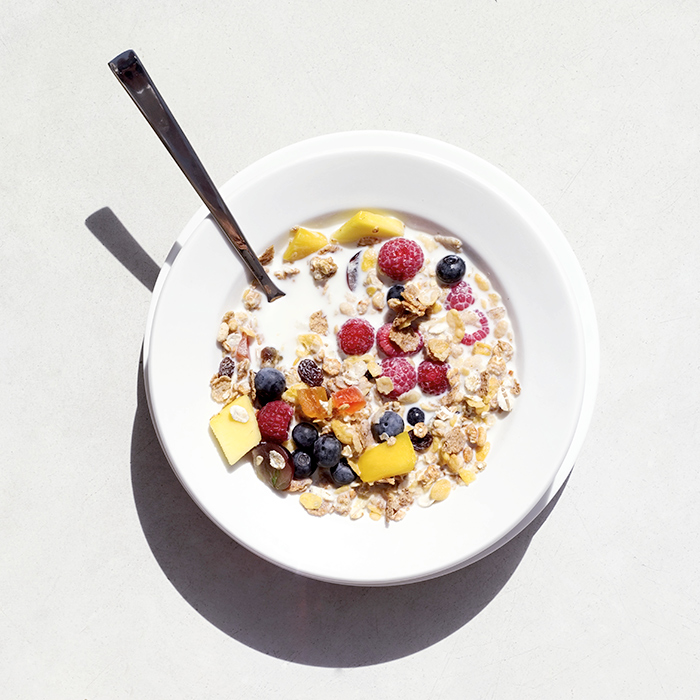Is Granola Good for You?

There’s a long-standing debate about whether granola merits its reputation as the "healthy person’s cereal." So we had to ask the question: Is granola really good for you? Or does it just have great PR and marketing?
We looked closely at granola's nutrition facts with the help of Melissa O'Shea, MS, RD, the director of nutrition at Exhale Spa.
Here's the good news: Granola's oats deliver impressive numbers in fiber and iron, while nuts and seeds add heart-healthy unsaturated fats and some protein, she says. But along with these benefits, granola can be very high in calories, oils you don't need, and contain scoops of sugar with healthy-sounding names.
More reading: 6 tips for cutting back on sugar
That doesn't mean granola must be forever banished from your breakfast bowl, O'Shea says. “Granola can be a part of a healthy diet, if you know what to look for.”
Here are six things O’Shea suggests you suss out about granola before you dip your spoon in:
1. Check the sugar. Granola can be loaded with sugar. But instead of high-fructose corn syrup, which you might be scanning the label for, it goes by healthier-sounding names, O’Shea says. "Evaporated cane juice, molasses, brown rice syrup, oat syrup solids—those are all sugar sources." She advises you aim for 8 grams per serving or less.
More reading: 5 sources of sugar you wouldn’t expect

{{post.sponsorText}}
2. Watch the calories. These typically amount to several hundred per serving size. Healthier granolas have less than 200 calories per ¼-cup serving, 270 calories per ⅓-cup serving, or 400 calories per ½-cup serving, says O’Shea.
More reading: These easy avocado eggs will revolutionize your mornings
3. Keep portion size small. This point is key: "The serving size for granola is smaller than cereal, not a whole bowl,” says O’Shea. Typically it's a quarter or a third of a cup. So rather than filling up a bowl with only granola and milk, use granola to enhance other healthy foods. “Toss a few tablespoons on your Greek yogurt or oatmeal,” she suggests. Remember, even the healthiest foods can become unhealthy if you eat them in excess.
4. Trim the fat. “A lot of granolas contain heart-healthy unsaturated fats from nuts and omega-3s from seeds,” O’Shea says. “But even they can still add up.” Look for granolas that have between 2 and 3 grams of fat per 1/4-cup serving. For example, Kind Healthy Grain Vanilla Blueberry Clusters with Flax Seeds has 3 grams.
5. Source the oils. Many granola varieties list palm oil and hydrogenated oils on their ingredient list. With their high saturated fat levels, these oils aren’t doing your heart any favors. Small-batch companies like Purely Elizabeth and Early Bird swap these for healthier alternatives like organic coconut oil and extra-virgin olive oil.
More reading: 10 super clean packaged snacks with 5 (or less!) ingredients
6. Scan for fillers. Even the ingredient list on healthy-leaning brands can contain some surprises, like inulin (a soluble fiber that can cause digestive problems), soy protein isolate, and other sneaky ingredients. “Look for short, pronounceable ingredients on the list,” O’Shea suggests. “Words you need a dictionary for don't belong in our food!” —Amy Eley
This post was originally published on April 30, 2013, and updated on Aug 3, 2015.
Loading More Posts...